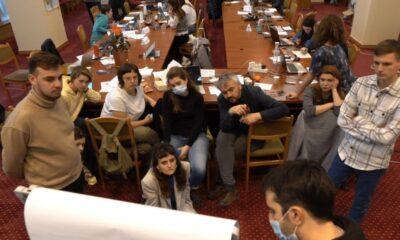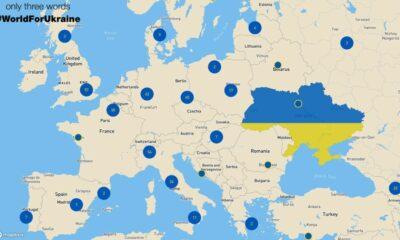Economy
Analysis: Strong leu, great leu or new heights for the dollar?!
Reading Time: 4 minutesStrong leu, great leu or new heights for the dollar?!
Author: Iurie Gotisan, ADEPT
I have often reported on the exchange rates dynamic and currency market and I resumed this topic given the recent evolution of these two indicators. Beyond various figures advanced by economists, bankers or analysts of financial market in their commentaries on exchange rates, two words revealing a convergence of opinions are often found. The first word is appreciation and it is linked to the leu, which many experts say could moderately strengthen in 2007, particularly due to the record share of credits in lei, large remittances of people working abroad, high interest rate on monetary market that makes the deposits in lei attractive and frequent currency “injections” of the National Bank of Moldova (NBM) on market. As regards the big currency supply on market, some persons say that banks also speculate on exchange rates, as well as investment funds that sell dollars for long-term investments.
 Volatility is the second word met frequently in disputes related to currency market. Less predictable moves of the exchange rate are not ruled out in the second half of this year, though big fluctuations will not be observed. The direct intervention of the National Bank on monetary and currency market could also amplify the volatility of the market. On the other hand, trade inflows (collections from export/import operations) will gain more importance for evolution of exchange rate, given the massive growth of imports which have direct implications on exchange rate.
Volatility is the second word met frequently in disputes related to currency market. Less predictable moves of the exchange rate are not ruled out in the second half of this year, though big fluctuations will not be observed. The direct intervention of the National Bank on monetary and currency market could also amplify the volatility of the market. On the other hand, trade inflows (collections from export/import operations) will gain more importance for evolution of exchange rate, given the massive growth of imports which have direct implications on exchange rate.
Although some experts and dealers of commercial banks say that it will be hard to exceed the threshold of 12 lei per dollar, the domestic currency could appreciate, if we mean what I have said above and a new maximum of the past 2.5 years versus dollar and euro was recently registered. Analysts say that the effects of depreciation of dollar are being felt: exporters signal losses, while import-related deals are flourishing. If the leu continues to grow versus dollar and euro, we run the risk to have some “beginnings” of financial crisis. The exchange rate may go out of control at any moment; that means it may decline, not grow.
Moldovan products – dearer on foreign markets…
It is clear that a stronger leu directly affects the country’s exports calculated in foreign currency which face difficult times anyway. For example, if a product costs 66 lei on domestic market, it means that this product was exported for about 5 dollars in November 2006 when the exchange rate was 13.2 lei per dollar. When the exchange rate drops down to 12.3 lei per dollar (like at present), the 66 lei is the equivalent of 5.4 dollars. Therefore, Moldovan products are dearer on foreign market and the price rises are based on caprices of exchange rate only, so that foreign clients start ignoring the few products made in Moldova.
So, those in charge with economy (Government, NBM, commercial banks, etc.) shall give a respiro to domestic exporters and producers because I think that all talks have forgotten the real economy. Consequences seem to be clear: a 3-fold growth of imports compared with exports and a trade deficit of about 500 million dollars in the 1st quarter of 2007 is one more confirmation. The impact will be stronger if the appreciation of leu is a long-term trend. I think that we will have a clearer image of Moldovan exports after 2–3 months, if the exchange rate declines in continuation.
Cheaper imports and credits and better statistics…
The domestic market risks to be invaded more by imported commodities, if the leu strengthens versus main reference currencies. At the same time, Moldova “may play this card” for own interest, if equipment and technologies allowing the modernisation of economy for lower costs are imported. However, cheaper imports could be less beneficial for national economy: the growth of imports of consumer goods, which are cheaper and have a better quality than Moldovan products, estranges clients and domestic producers.
At the same time, the appreciation of leu could increase by more than 10 percent the GDP calculated in dollars in terms of economic growth. Indeed, I do not think that the real growth in 2007 will be higher than 5 percent, and another 5 percent are due to the decline of the dollar, which will finally have no connection with growth of productivity of domestic enterprises. We will probably have a statistical illusion rather than a real economic growth at the end of the year. However, attraction of foreign investors would be an effect of alleged illusion, as the strengthening of leu will increase on a short term the appetite for credits in foreign currency and foreigners will not lose this opportunity to invest their funds. However, the attracted funds could be of a short term and they could finally produce new real rises of Moldovan leu, lower collections from exports and a higher trade deficit.
At the same time, I fear that we run the risk to face a crisis of confidence, if the leu grows very much. Seeing the dollar depreciating, population will try to get rid of foreign currency and massive sales will appreciate the exchange rate more, and this situation could be the beginning of a crisis, if the leu suddenly depreciates. Some Central European states such as Hungary or Poland have faced this phenomenon, but I fear that it could be stronger in our country. I think that the appreciation will not be lasting. Macroeconomic bases influence the exchange rate on long term, and we may be witnesses of a depreciation of leu in maximum one year because foreign deficits (trade and current account deficits) grow too much.
Economy
Moldova will receive a disbursement of 36 million euros as part of the the Economic Recovery Plan
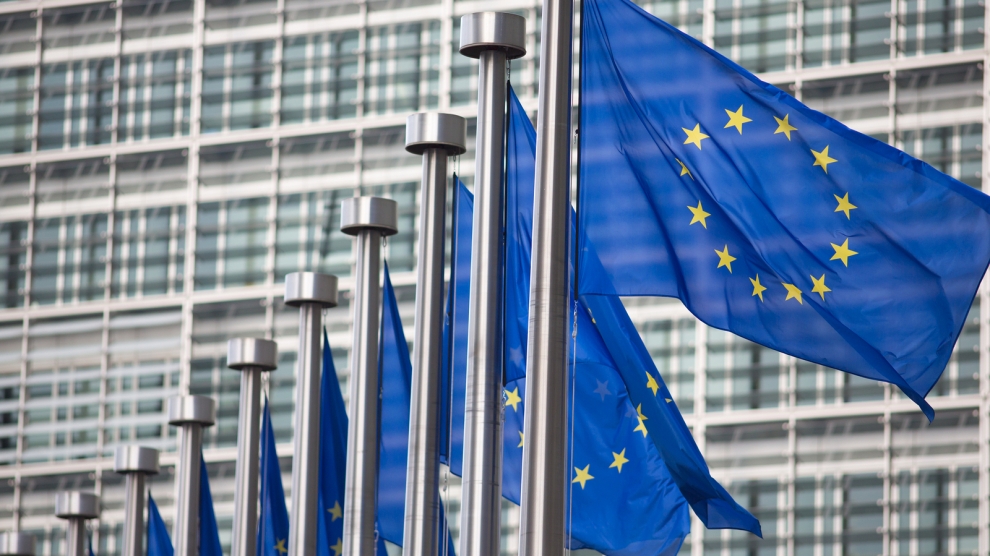
This week, the European Commission approved the disbursement of 36 million euros in grant money for the Republic of Moldova. The announcement was made by Deputy Director-General for Neighbourhood Policy and Enlargement Negotiations at the European Commission, Katarina Mathernova, who paid an official visit to the Republic of Moldova between September 13-15, together with Managing Director for Russia, Eastern Partnership, Central Asia, Regional cooperation and OSCE, at the European External Action Service, Michael Siebert.
The EU officials had meetings with President Maia Sandu, Minister of Foreign Affairs and European Integration, Nicu Popescu, Speaker of Parliament, Igor Grosu, Prime Minister of the country, Natalia Gavrilita, as well as key representatives of Government, international financial institutions and the civil society, according to a press release issued by the Delegation of the European Union to the Republic of Moldova.
Beside such topics as the EU-Moldova relations and prospects, the priorities of the reform agenda of the new Moldovan Government, preparations for the Eastern Partnership Summit at the end of the year and the Transnistrian conflict settlement, the officials also discussed the EU assistance in support of reforms and the Economic Recovery Plan for Moldova, which was announced in June with a total EU support of 600 million euros over the next 3 years.
“The first measures under the Economic Recovery Plan will shortly materialize, with the expected disbursement of 36 million euros in grant money under budget support programmes to support the authorities’ efforts to fight against the consequences of the pandemic. Moldova can count on EU’s assistance on its path to reforms and to recovery, bringing tangible results to citizens,” Katarina Mathernova stated.
The plan is based on assistance provided by the European Union through various bilateral and regional instruments, aiming to mobilize the funds in the form of grants, loans, guarantees and macro-financial assistance.
“The Economic Recovery Plan for the Republic of Moldova involves much more, not just this financial support provided immediately. It must help digital transformation, strengthen infrastructure, energy efficiency, education and support small and medium-sized enterprises,” the EU official also said.
As Prime Minister Natalia Gavrilita informed, “The Economic Recovery Plan and the 5 flagship initiatives for Moldova in the Eastern Partnership will directly contribute to the reform and consolidation of institutions, stimulate long-term socio-economic development, bring direct benefits to citizens, and unleash new economic opportunities through promoting the green agenda and digitization. Small and medium-sized enterprises (SMEs) have been hit hard by the crisis. Promoting and diversifying access to finance and reducing collateral requirements will be essential in supporting economic operators. We are grateful to the EU partners who will launch two programs to support 50 000 independent Moldovan SMEs to adapt to the new conditions.”
President of the Republic of Moldova, Maia Sandu, welcomed the decision of the European Union to disburse about 745 million lei in grant money, as the official page of the President’s Office announced. “EU support comes after a long period of freezing of European assistance, caused by former governments. We managed to relaunch the political dialogue with the European Union and resume financial assistance. The Republic of Moldova is gradually regaining the trust of its strategic partners. This European support is also a signal of encouragement for the new Government team in its commitment to clean up the institutions, fight corruption and launch development programs in the country,” said Maia Sandu.
Photo: unknown
Economy
Romania and Moldova signed a partnership memorandum pledging to cooperate in promoting their wines
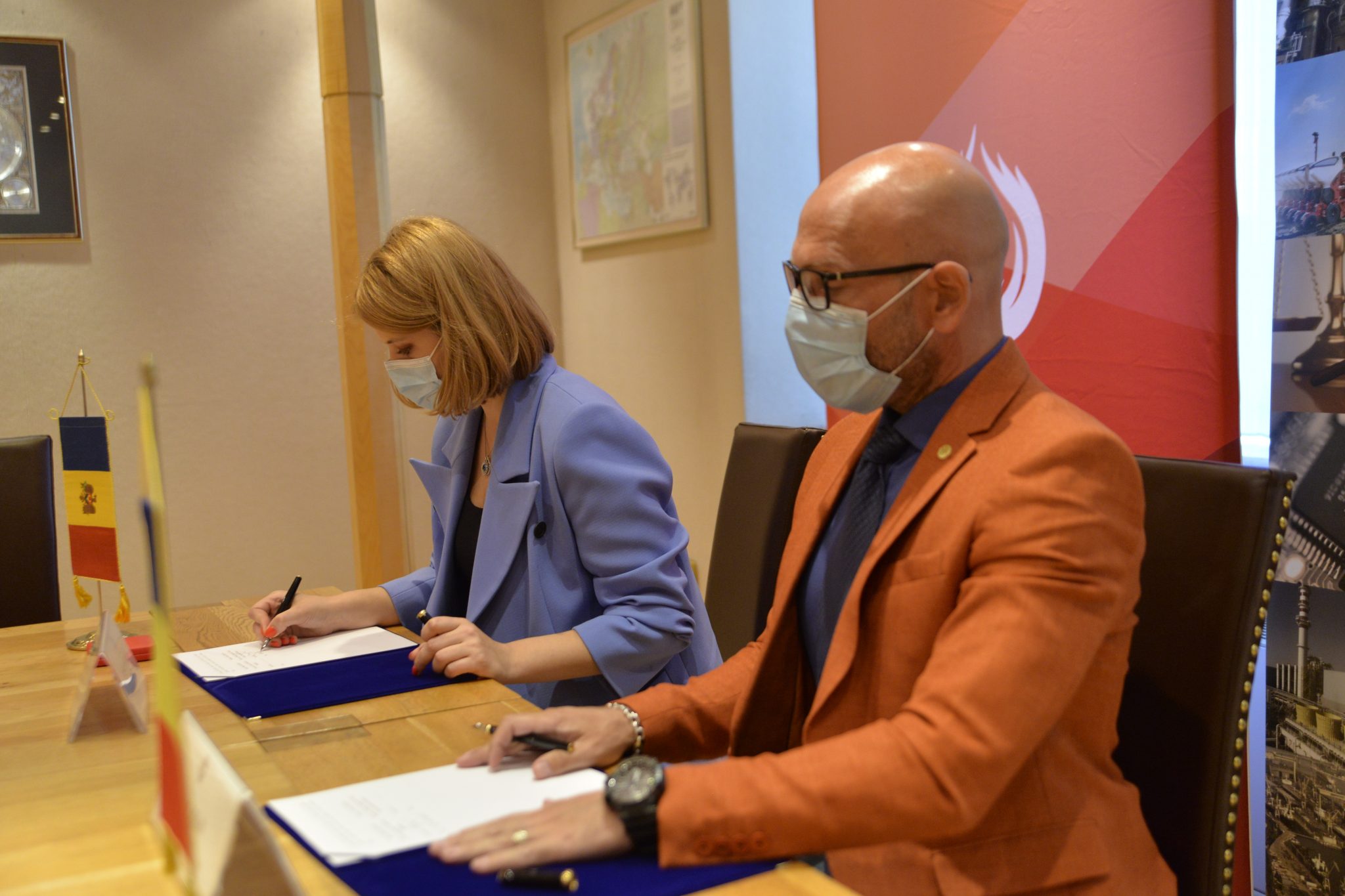
The Chamber of Commerce and Industry of Romania (CCIR) and the National Office for Vine and Wine (NOVW) of the Republic of Moldova signed, last week, a memorandum of cooperation on organizing joint promotional activities in the markets of common interest, as the CCIR announced.
China, Japan or the USA are just some of the markets targeted by the Romanian and Moldovan institutions. The memorandum also involves advertising activities for wines from common indigenous varieties, promoting the oeno-tourist region, developing a tourist route in the two states, exchange of experience, study visits, and mutual support in identifying new export opportunities. “We are very confident that this collaboration between our organizations will lead to sustainable economic growth and a higher degree of well-being among Moldovans and Romanians,” claimed Deputy Secretary-General of CCIR, Bogdan Visan.
On the other hand, Director of the NOVW, Cristina Frolov, declared that no open competition with Romania is aimed at the governmental level of the Republic of Moldova. “This request for collaboration is a consequence of the partnership principle. Romania imports 10-12% of the wine it consumes, and we want to take more from this import quota. Every year, the Romanian market grows by approximately 2.8%, as it happened in 2020, and we are interested in taking a maximum share of this percentage of imported wines without entering into direct competition with the Romanian producer,” the Moldovan official said. She also mentioned that Moldova aims at increasing the market share of wine production by at least 50% compared to 2020, and the number of producers present on the Romanian market – by at least 40%.
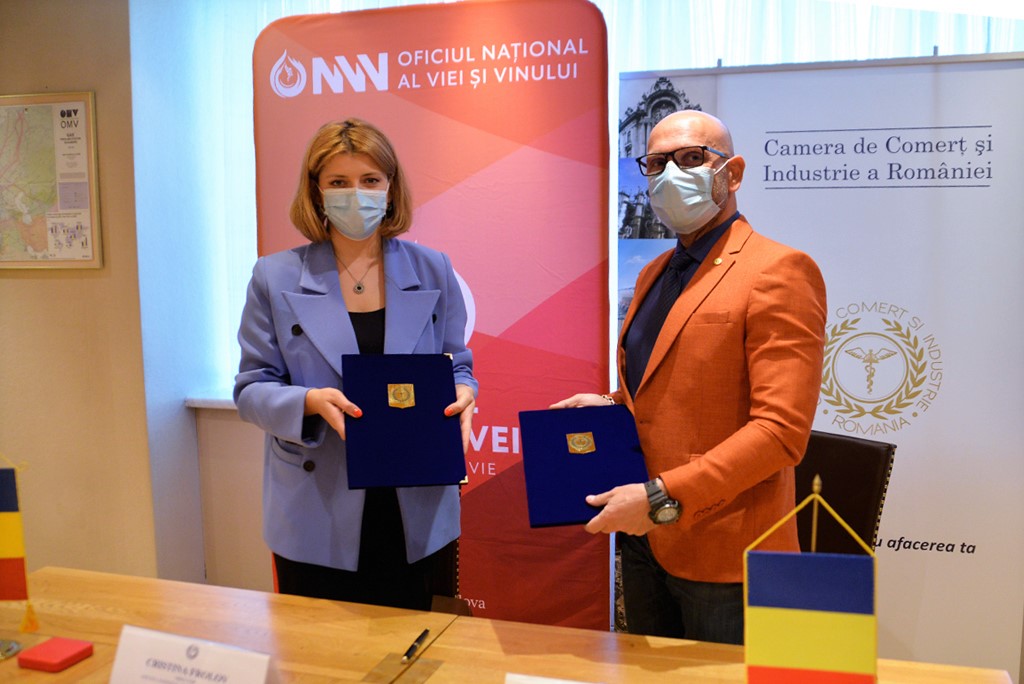
Source: ccir.ro
**
According to the data of the Romanian National Trade Register Office, the total value of Romania-Moldova trade was 1.7 billion euros at the end of last year and over 805 million euros at the end of May 2021. In July 2021, there were 6 522 companies from the Republic of Moldova in Romania, with a total capital value of 45.9 million euros.
The data of Moldova’s National Office of Vine and Wine showed that, in the first 7 months of 2021, the total quantity of bottled wine was about 27 million litres (registering an increase of 10% as compared to the same period last year), with a value of more than one billion lei, which is 32% more than the same period last year. Moldovan wines were awarded 956 medals at 32 international competitions in 2020.
Photo: ccir.ro
Economy
Moldova’s hope to be a top walnut exporter and its main difficulties
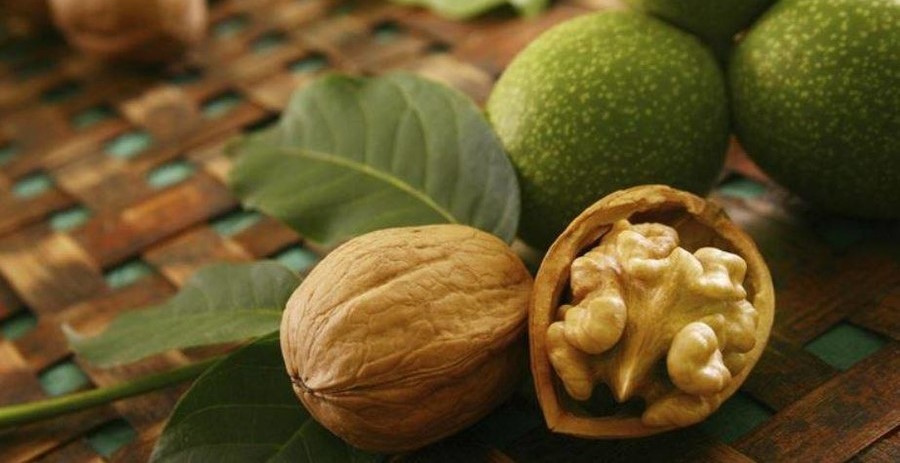
The Republic of Moldova has perfect weather conditions for growing walnut trees, that creating a great potential of walnut production and trade, especially on international markets, where the demand is way higher than the product’s supply. National and international experts believe that the country’s walnut production industry is on the verge of important transformations, which could lead to increased yields, quality and competitiveness worldwide.
According to authorities, Moldova exports 34-35 thousand tons of walnuts in shell, which is about 7% of the total export of fruit and 5% of the total export of horticultural products. The export value is assessed as being $120 million, that being 57-60% of the total fruit export value and about 50% of horticultural export value. Most of walnut crops are exported to the EU countries, such as France, Germany, the Netherlands, Romania and Austria. The country’s exports were among the world’s top 10 when it comes to the highest dollar value of the product during 2020.
Viorel Gherciu, Minister of Agriculture and Food Industry, pointed out that the production in the domestic walnut industry has increased by 55% in the last five years, which ranks Moldova among the main producers in the world.
“The biggest opportunity for this industry is that we are in the geographical proximity of the largest walnut import area in the world, which is the European Union, with almost 40% of total imports in the world. We are on the EU border, with privileged relations, with an Association Agreement. We already enjoy a good relationship in working with European importers, they trust our processors. A very close collaboration has been created and this is, in fact, the guarantee for those who invest in the area,” claimed the president of the Walnut Producers Association, Oleg Tirsina.
The data provided by the National Bureau of Statistics show that there are 34.7 thousand hectares of walnut plantations in the country. 20.90 hectares are represented by orchards. 75% of planted orchards are formed of old varieties trees. 30-35% of the exported production comes from orchards, the rest comes from individual farmers and plantations along the roads. This means that the quality of walnut production is not at its maximum potential. Developing commercial plantations through orchards modernization and extension of walnut varieties would provide double yield and better quality, experts say.
Governmental support in the form of subsidizing solutions, foreign investments and credit options are indispensable for the industry development. One of the financing options is the credit line of the European Investment Bank Project. Since 2016, 15 producers and processors of nuts, almonds and hazelnuts have benefited from these loans with the total amount of investments worth 8.7 million euros. A further extension of the project would provide another 60 million euros for the modernization of the horticultural sector in general and for harvesting organic walnuts in particular.
Photo: heymoldova.com


